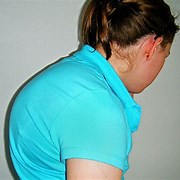What do you mean "feet forward"?I'm brand new to karate and am wondering about the feet forward. It feels unnatural to me. How long does it take for this to go away?
Usually if your body goes toward one extreme, you may need to push your body to the other extreme so your body will come back to the center.
For example, if you have this problem:

You will need to do more of this:

Last edited:
